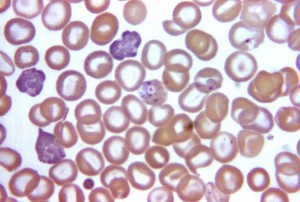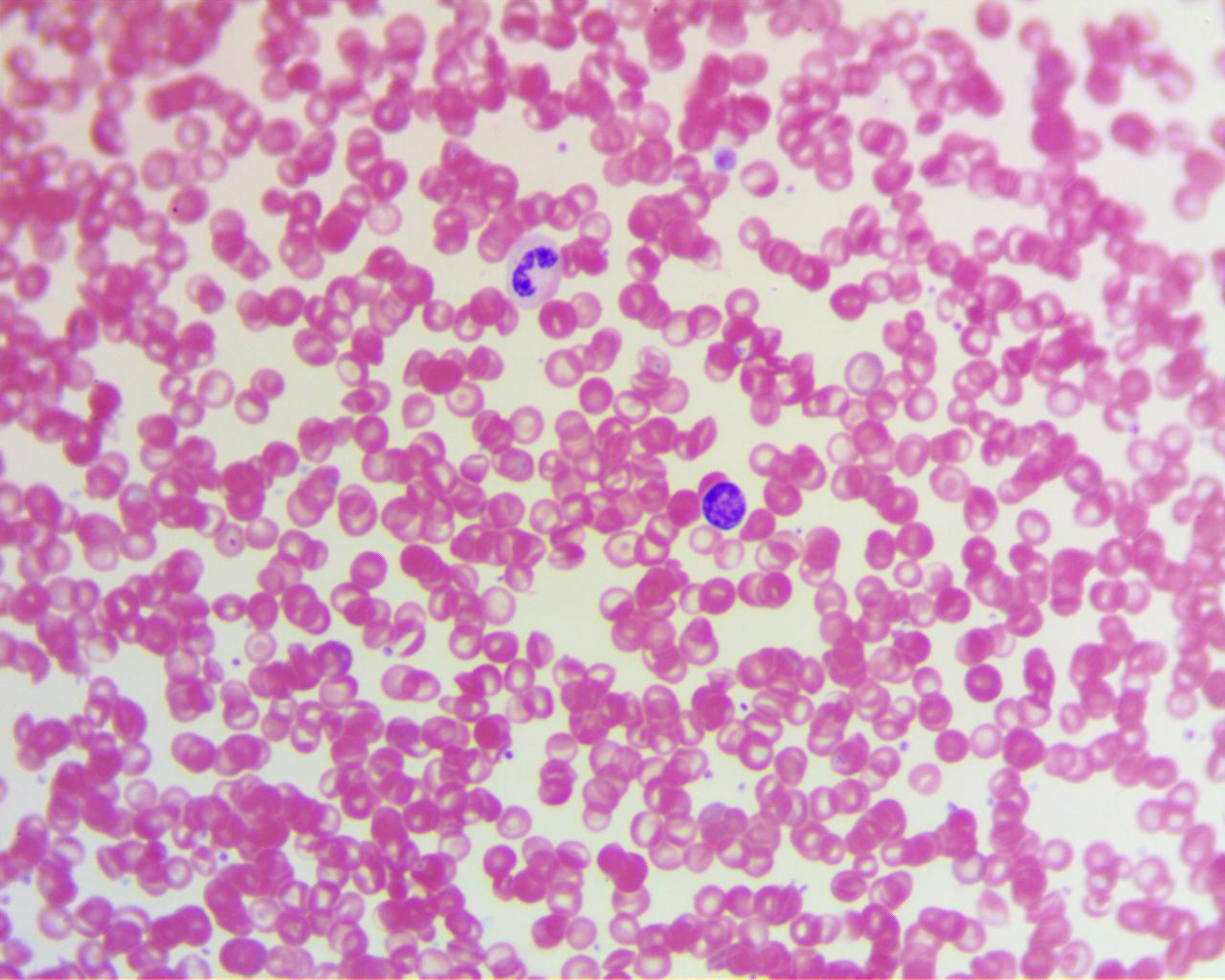Imagine a world where any disease or illness that is visible in the blood would automatically be found and diagnosed at home during a routine preventative health self-check.

Fast, Cheap, and Accurate Health Check
Each week or whenever you aren’t feeling 100%, you put a drop of blood on a small device and 30 minutes later it has a full and accurate report of every abnormality in your blood.
This could save billions of lives. (At least those who die from treatable illnesses.)
That is not far off.

In fact it is possible today, but no one has done it yet.
What makes this possible is a combination of two fields that have made huge breakthroughs recently.
- Machine Learning
- Micro Robotics
The first technology is called machine learning and more specifically deep learning using neural networks. This branch of Artificial Intelligence is especially useful in finding patterns in images. It is used in everything from facial recognition to self driving cars to diagnosing lung cancer.
But one area where this has yet to be used broadly is in blood screening. From my research, I could only find an article using this technology to diagnose malaria specifically.
The second technology is micro robotics. These are small electronic systems like Adruino or Rasberry Pi that can be combined with sensors and motors to create just about any robotic gadget imaginable.
So combining these two fields, my idea is possible today.
Machine Learning
First, let me explore how machine learning would be used:
The idea is to create a continuously learning open neural network that can diagnosis anything visible in blood. This of course would only be possible with the participation of millions of people. But by making a continuously learning system each new person providing images of blood samples and answering questions about their own status would add greatly to the system’s knowledge.
We know it is possible to build a deep learning network that can learn to recognize thousands of diseases automatically. This is really not that different from the task of facial recognition or other image recognition tasks.
However, in order for it to work accurately, it needs many samples. For each specific disease or illness, it needs at least 10 individuals who are diagnosed with that prognosis. Each individual could provide a sample of blood that could be scanned to create thousands of images. In many cases, that would be enough for the system to identify unique characteristics.
Of course, even without those samples, the system could be aided with existing medical imagery from data sets that have already manually identified known patterns. That would give it a start for certain ailments.
However for this to be effective for general disease and illness diagnosis, this needs millions of participants providing samples. But of course, once it got to that point, it would continue to learn and improve.
Cheap Automated Blood Scanner
Now, in order for this system to work, it would need a way to scan the blood sample.
Imagine a 3D printer on a very small scale. Attach any smart phone with a spherical lens and move the blood slide under that lens while taking pictures throughout the sample at various focal lengths.
For a single blood sample thousands of images could be uploaded and these images would then be analyzed by the machine to look for patterns associated with thousands of ailments.
This device could easily be made with Adruino for less than 100 dollars today.
Hopefully, if it was mass produced it could be made for less than $5.
Really? Save Billions of Lives?
So how could this possibly be available to billions of people?
First of all, internet is available in almost every country and it has decent speeds. Data plans may be too expensive in some areas, but a huge percentage of the world has access to broadband internet and smart phones.
In fact I just checked and around 2 billion people have smart phones which is more than 1/4 people in the world. That number will only continue to grow.
In fact, here are some related products that actually sparked my idea:
Foldscope
Paperfuge
The Idea: Automated Blood Scanner
So what is needed is a cheap device to go along with these that can use existing smart phones to upload blood images to the internet.
If the Automated Blood Scanner can be produced for under $5, it is cheap enough for even a farmer in Africa to afford. Imagine if he could have this device at his home and use his phone to check his family for early signs of malaria. Before he or his children even get sick with malaria, he can go ahead and test the problem before the parasite gets out of hand. Instead of spending a week trying to save his child’s life, he can treat his children early and everyone can work and go to school without the constant sickness that destroys all resources and progress.
There are many problems that destroy resources in developing countries and make it hard to afford improving living conditions. However, one of the most destructive is malaria and other sicknesses that lead to death and beyond all the pain and suffering also destroy all the family’s time and resources that they have been working hard to gain over the past years.
Getting Started
Well one clear way is to initially focus on a specific ailment like malaria. If the system could be built that can diagnose malaria quickly cheaply and reliably, this could be used around the world by billions of people and start saving lives immediately. Then, while saving lives from Malaria, it could also be learning about everything else found in blood at the same time.
Patients could volunteer information to the system to add labels to their blood images. Simple things could be included like height, weight, race, and location. Lifestyle questions that affect health could be included: Do you smoke, do you drink, do you eat broccoli, etc.
And of course those who are willing, could also share if they have been diagnosed with various ailments by doctors already: High blood pressure, heart disease, lung cancer, HIV, etc.
Anything about the patient could be added to label those specific images. The system would associate the unique patterns in those images with those labels.
Diagnosing Everything
This is how the machine learns to diagnose. When it sees this pattern again in a new image, it can add the associated labels and score it with a % match. These results could be sent to a human doctor to verify, but quickly it would surpass the ability of human diagnosticians.
It will even find patterns that experts have never recognized before. Just like these systems for diagnosing lung cancer or sepsis:
Diagnosing Cancer with Machine Learning
Prevent Sepsis Using EKG with Machine Learning
Beyond Diagnostics
The system is not restricted to learning to diagnose. It can also learn complex patterns between blood images and medicine.
Another words, it can learn what medicine or treatment works best in specific situations.
For example, if every person with malaria has a specific pattern in images of blood cell, whenever this reliable pattern is seen again, the machine can report that the blood image has a 97% correlation with malaria. But at the same time it can find other correlations: maybe the person has malaria, HIV, high blood pressure, and an infection that could easily spread quickly. This combination of ailments is a recipe that could quickly lead to death. Perhaps the typical medicine that is used for malaria needs to adjusted because of the weak immune system.
Someone with HIV and malaria could respond differently than a patient with high blood pressure for example.
This is where the diagnostic machine becomes a prescriptive expert. If a patient enters the medicine they are taking and continues to supply additional blood images, the machine can literally see the effect of different medicines in the blood. In fact, it could even learn to recognize the unique patterns that indicate the presence of specific medicine in the blood.
The patient can also enter additional information like whether they are feeling better or worse; whether they are gaining weight, or losing it; whether they are back to normal life or laying in their death bed.
So as the medicine has it’s effect, it can be correlated with a success or failure for the treated ailment. But at the same time it is also correlating the information with everything else it knows about the patient. After millions of patients, it can quickly learn complex pattern and prescribe the best treatment for each person. For example, overweight patients with high blood pressure and heart disease may respond better to a specific medication with less side effects. On the other hand, an athletic person with HIV might need an entirely different medicine for the maximum success rate.
Revolutionary and Should Exist Today
This technology is revolutionary. It is possible. It can exist today and it should exist today. All we need to do is make it and keep making it cheaper and better and more accurate.
I imagine after five years this system could completely change everything about life expectancy especially in the majority of the world where lab technicians are over worked and treatment is done without accurate diagnostics.
Public Domain Idea
This idea belongs to humanity, for the good of all, for the honor of our Creator - that we may show our love to one another.
Another words, I am posting this idea publicly to prevent any patents. This is not an invention that should be patented. This is an idea that should be available to everyone. Let the free market make as many versions as possible as cheaply as possible and available to all.
This idea covers as broad a mechanism as possible to declare any usage as free from patent:
- Using any driving mechanism (i.e. motors, springs, gears, etc.)
- To move any digital camera (i.e. smart phone, micro camera, etc.)
- Over any body fluid sample (i.e. blood, urine, saliva, etc.)
- Prepared with any technique (i.e. slide, smear, capillary, centrifuged, etc.)
- Along any direction (i.e. 3D pathways, 2D pathways, etc.)
- With any transformations (i.e. focal length, light source, etc.)
- For any metric (i.e. blood count, disease prognosis, infection prognosis, etc.)
- Analyzed with any software (i.e. neural network, genetic algorithms, etc.)
- To generate any recommendation (i.e. medicine prescriptions, treatment schedule, etc.)